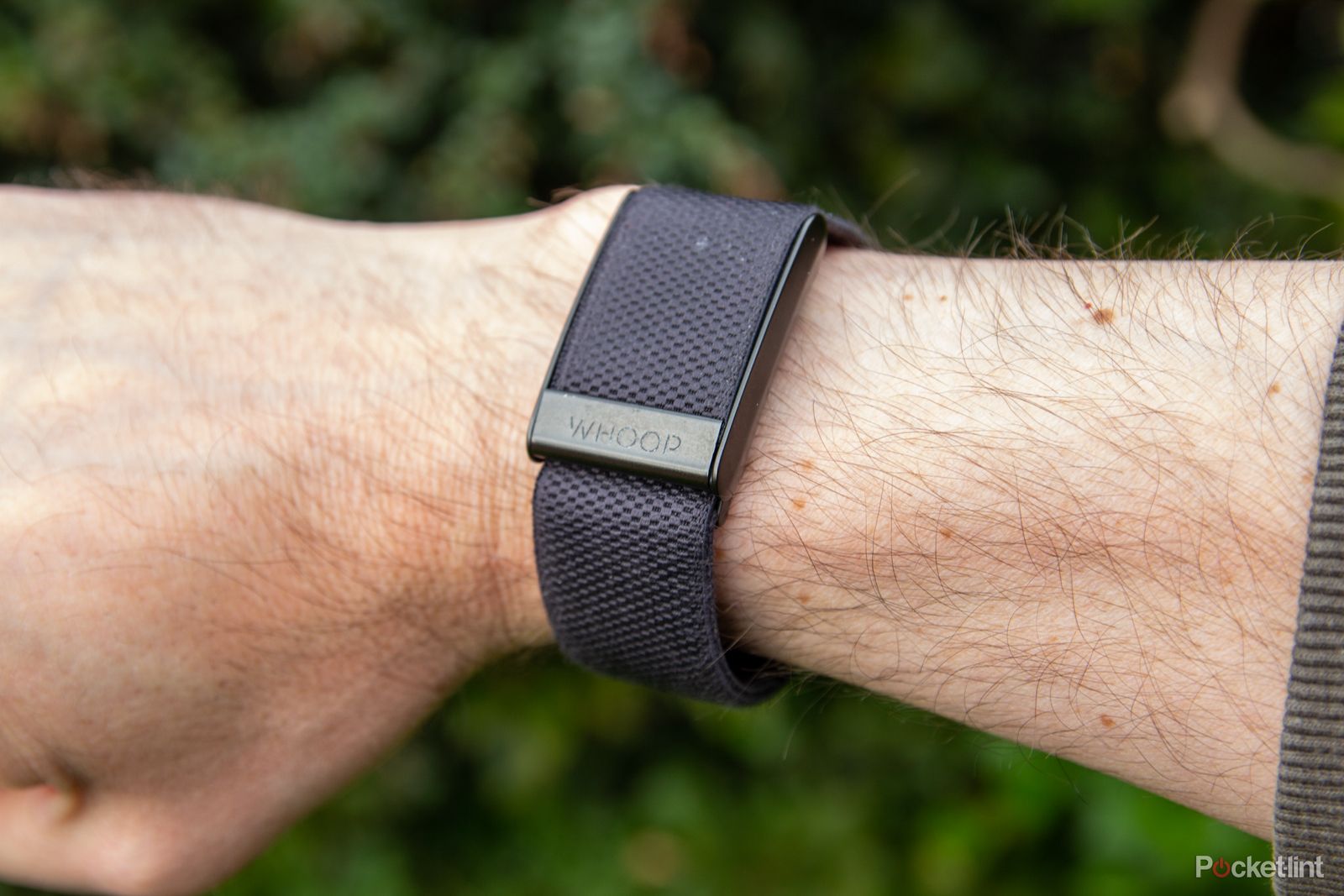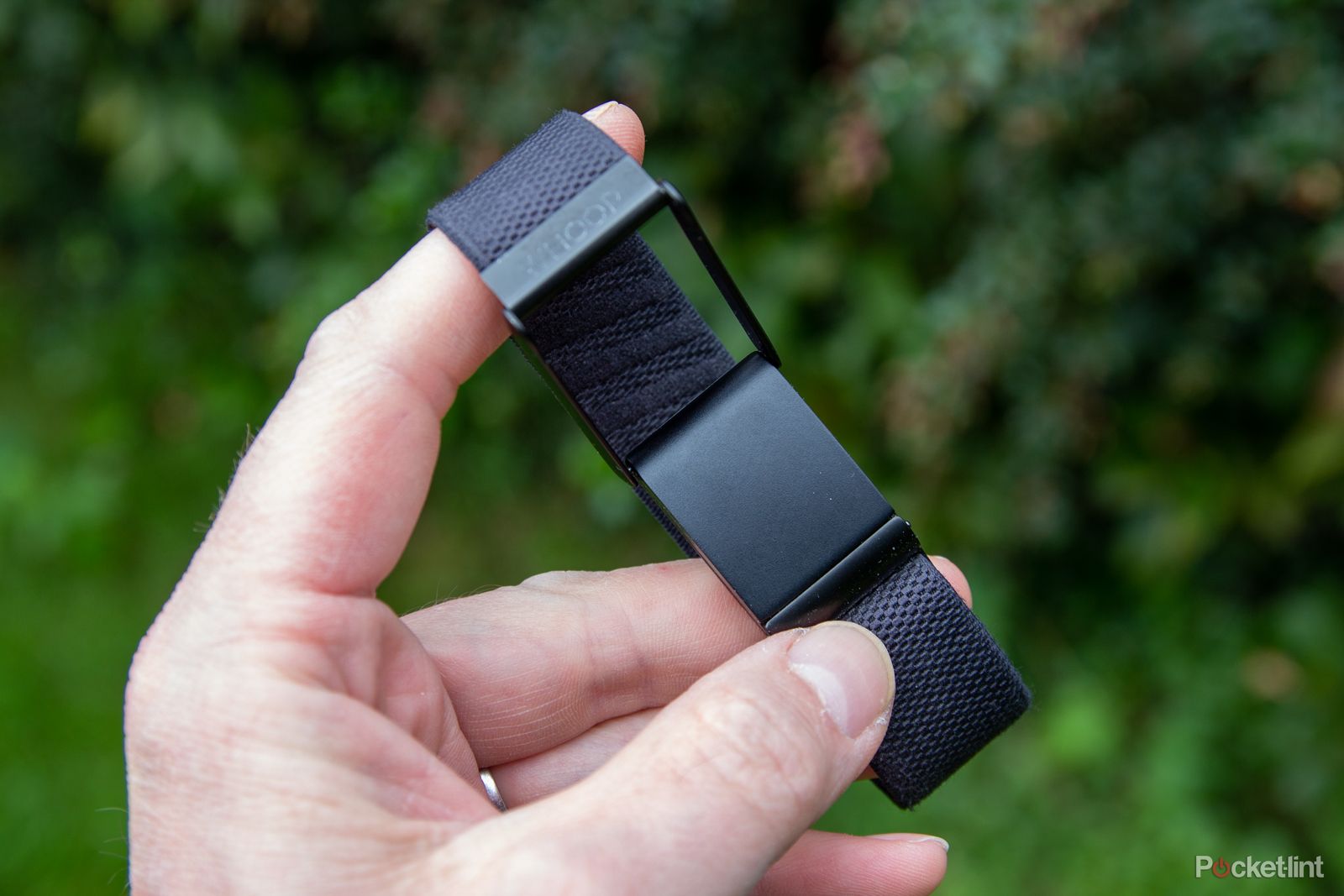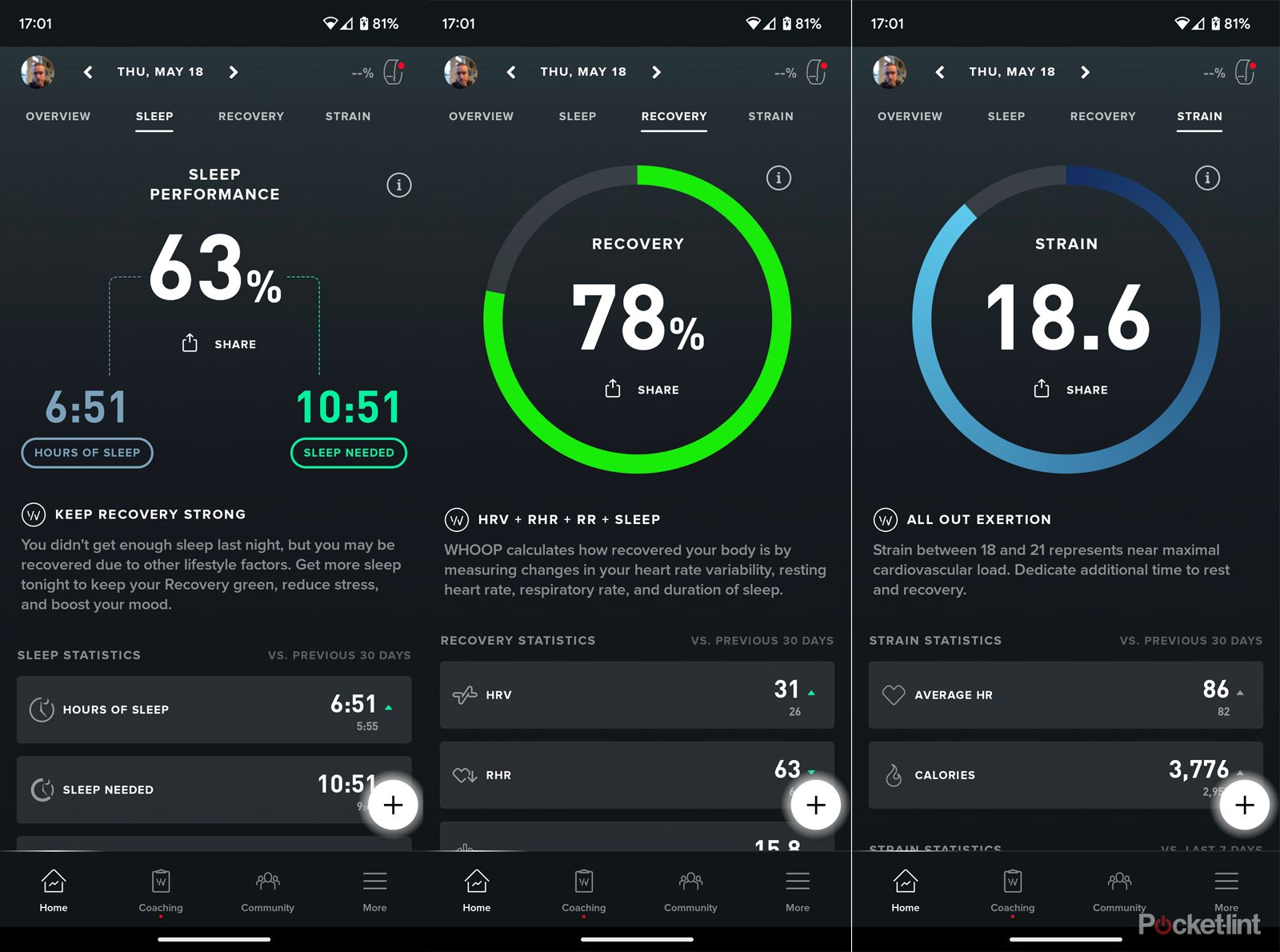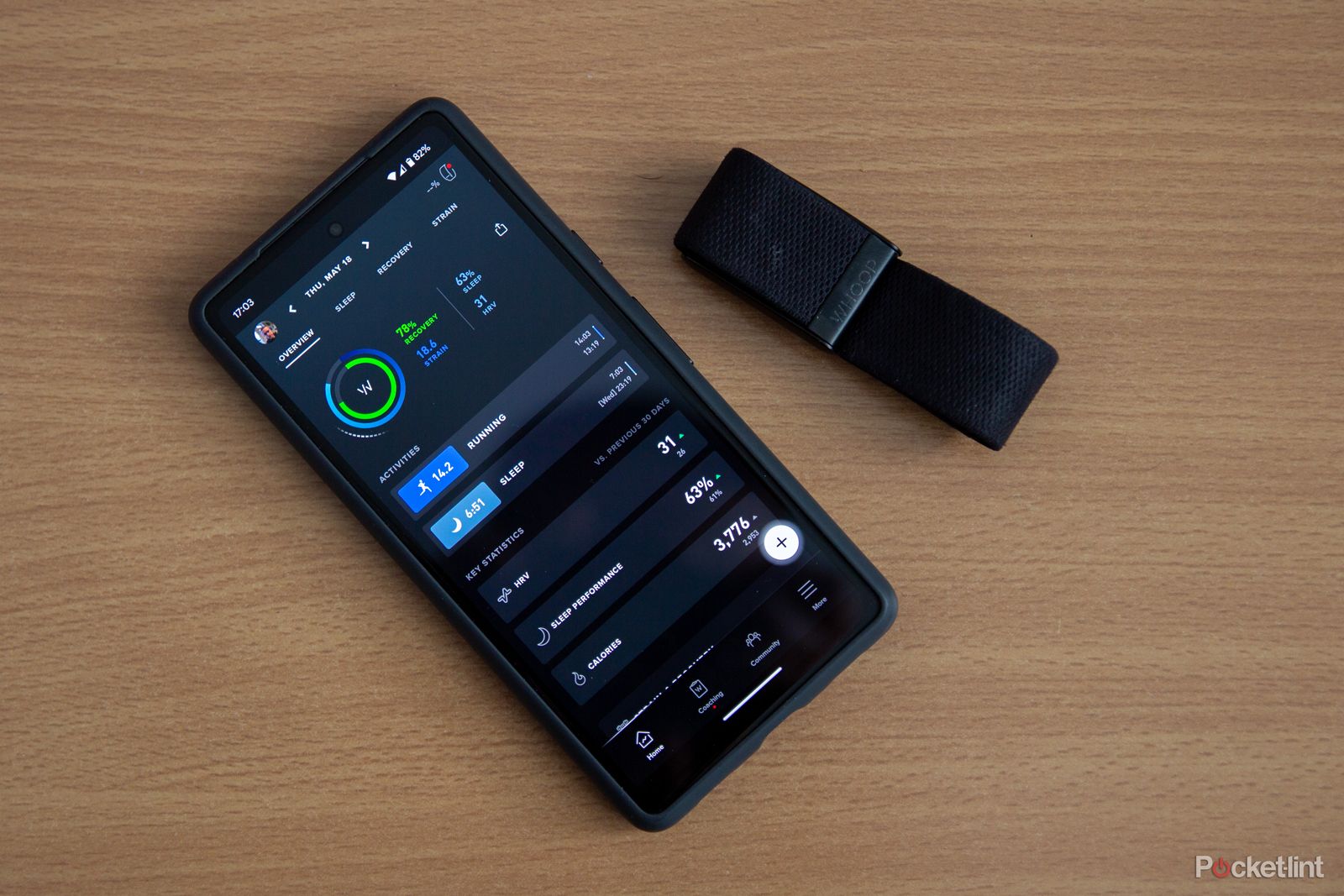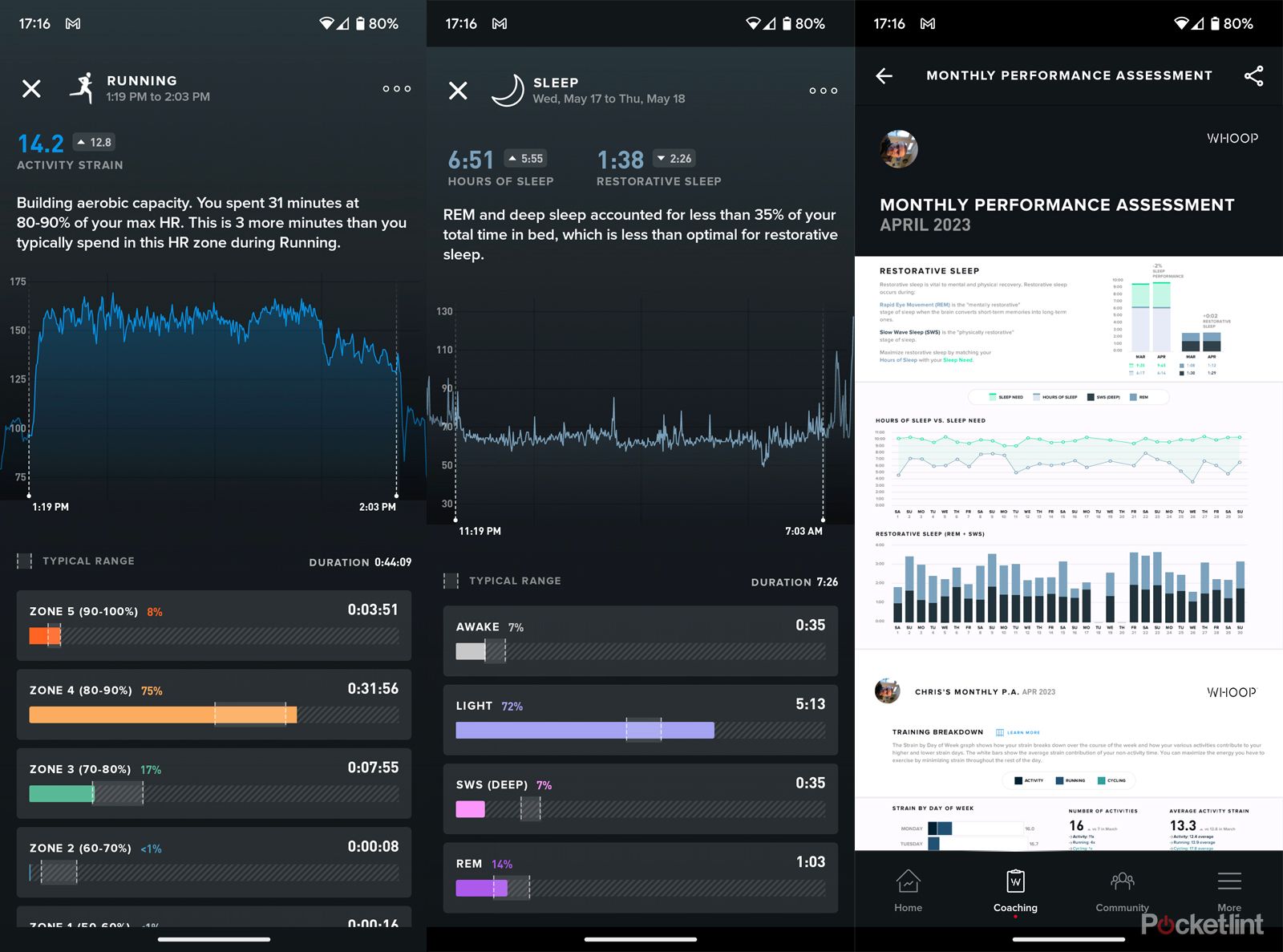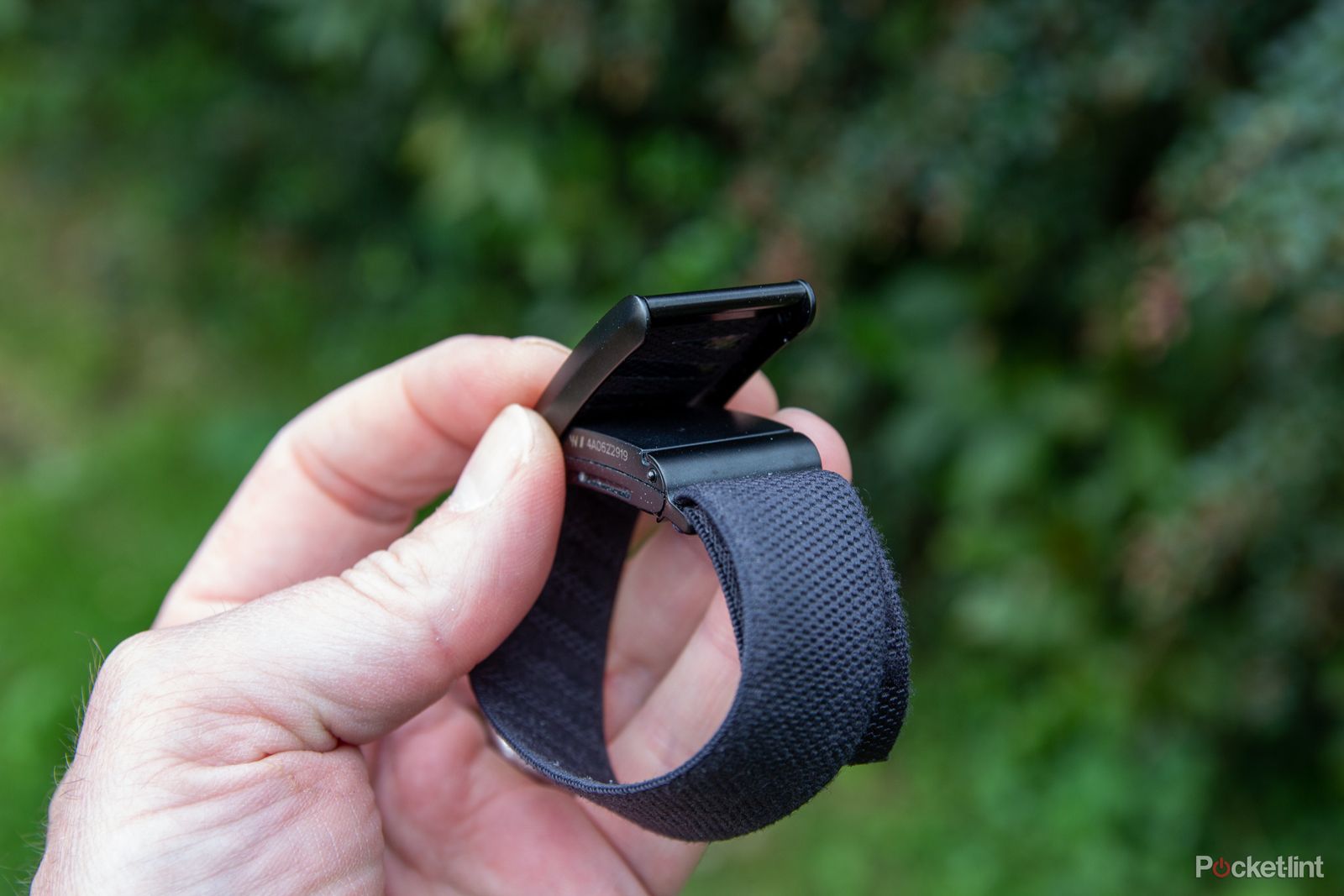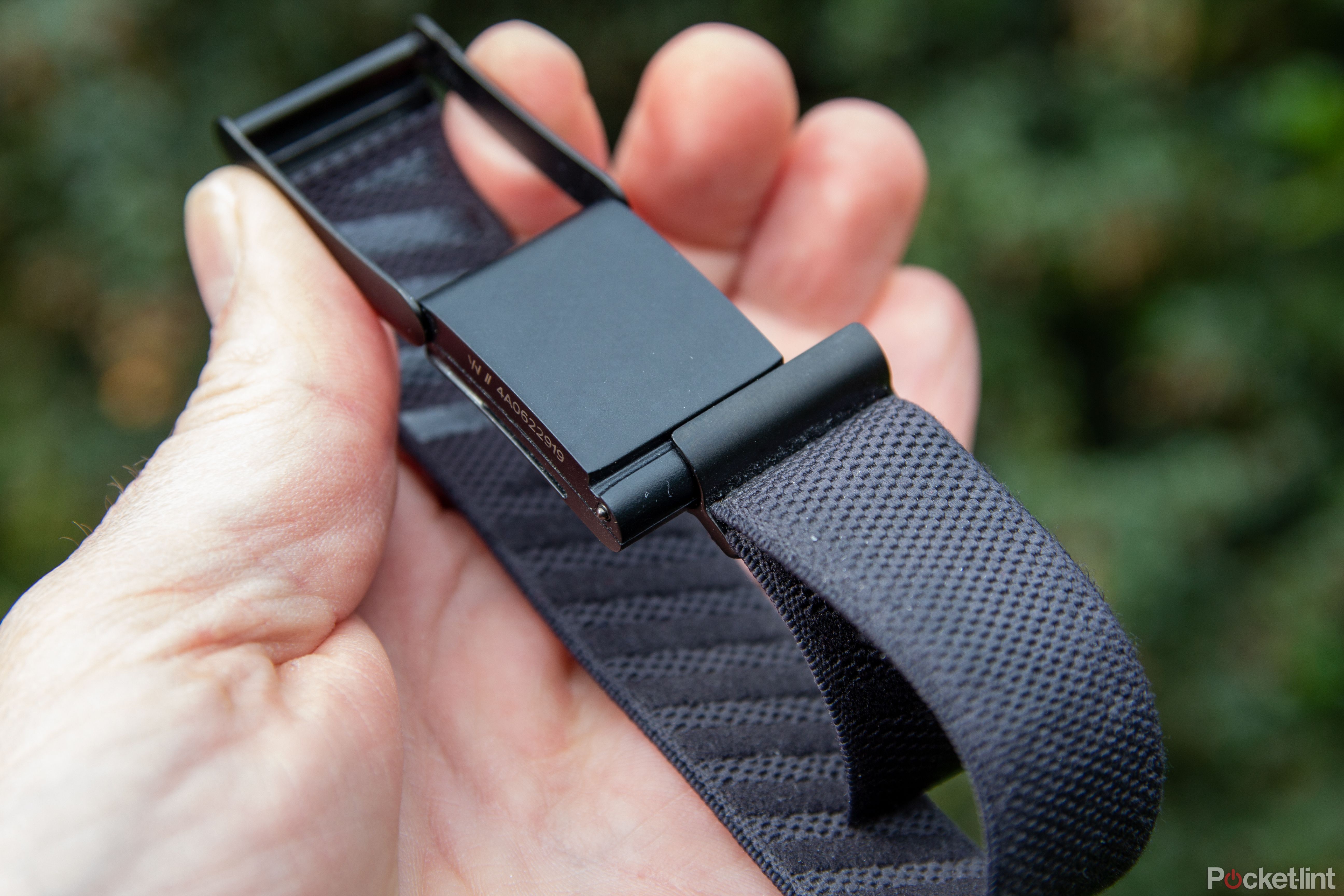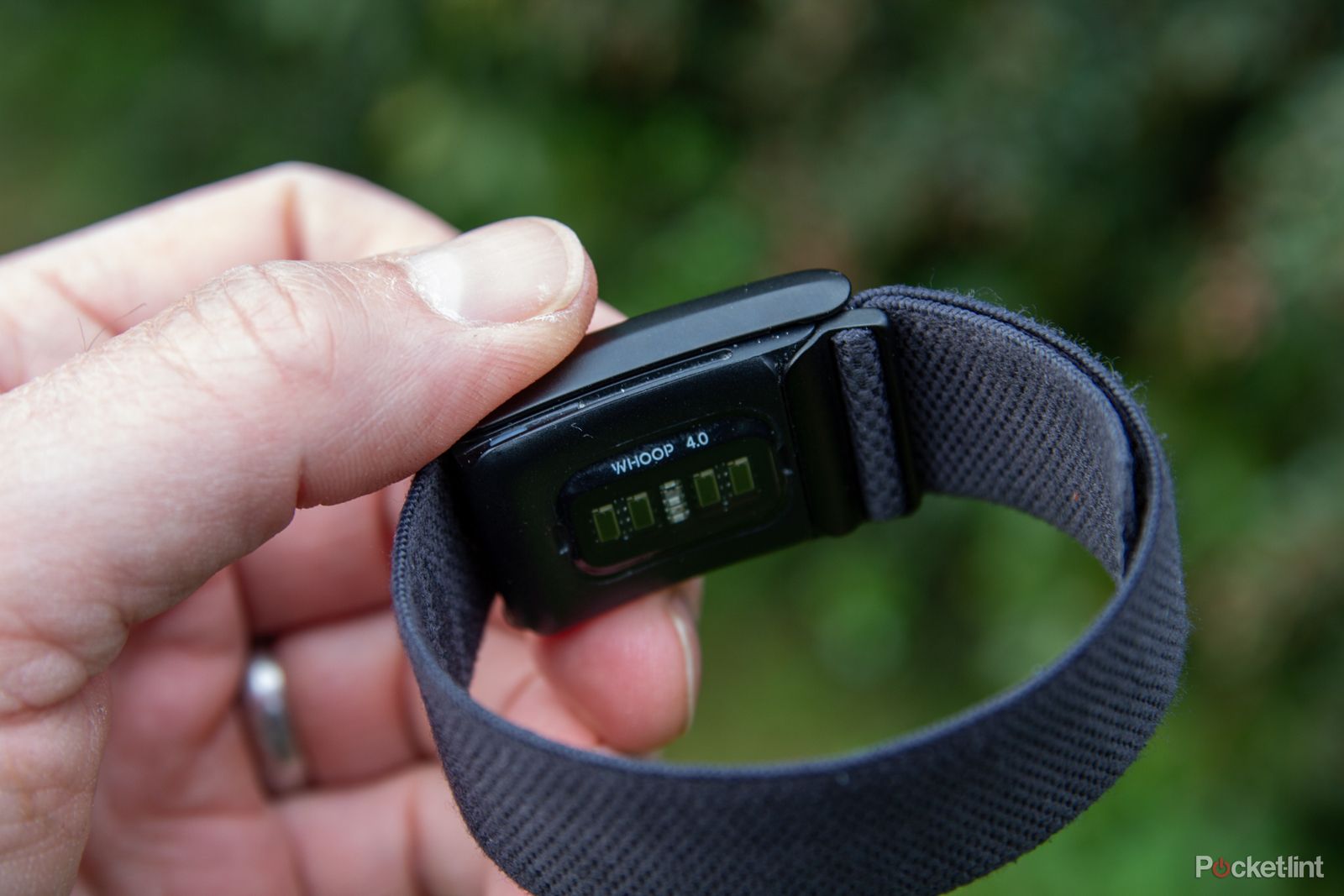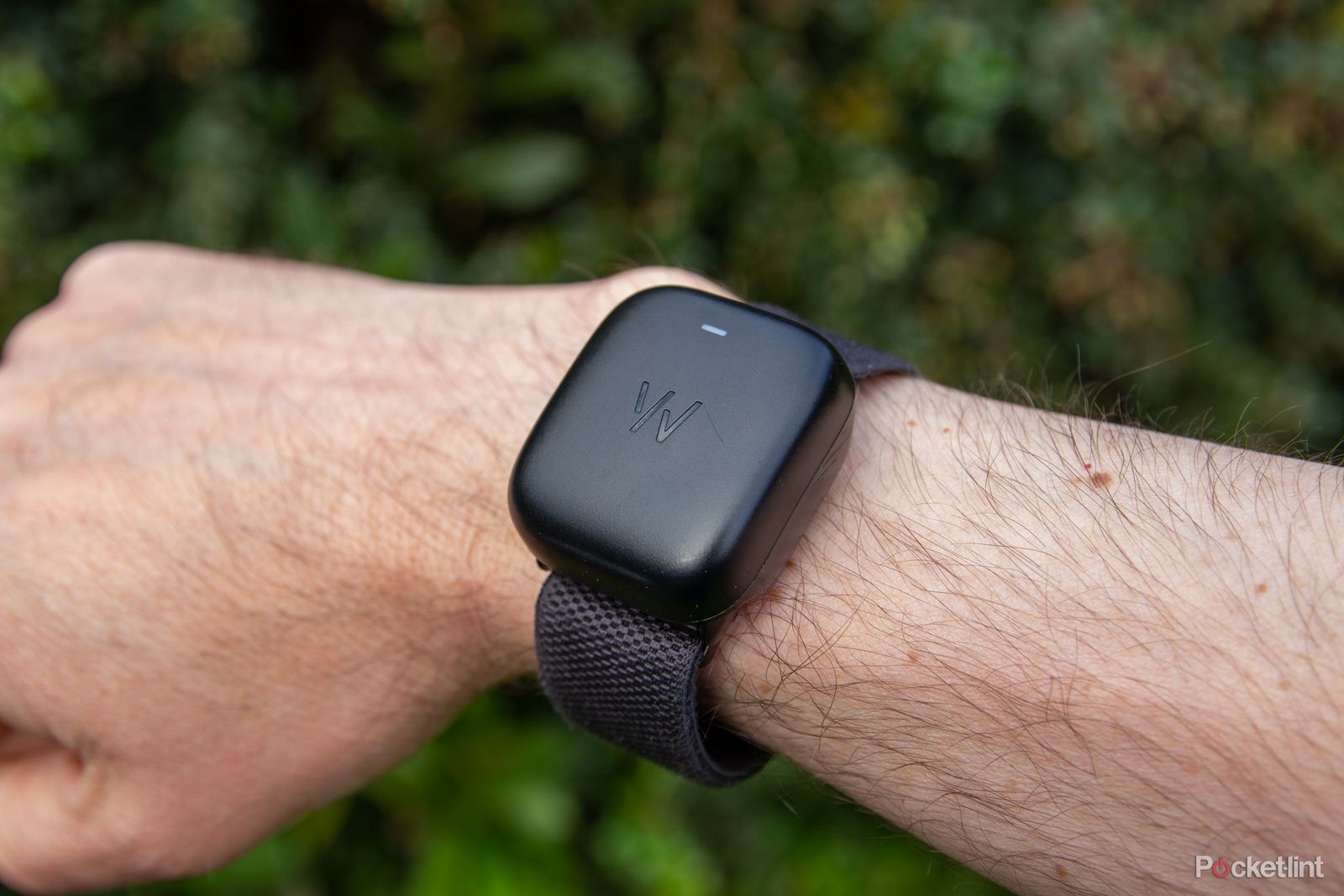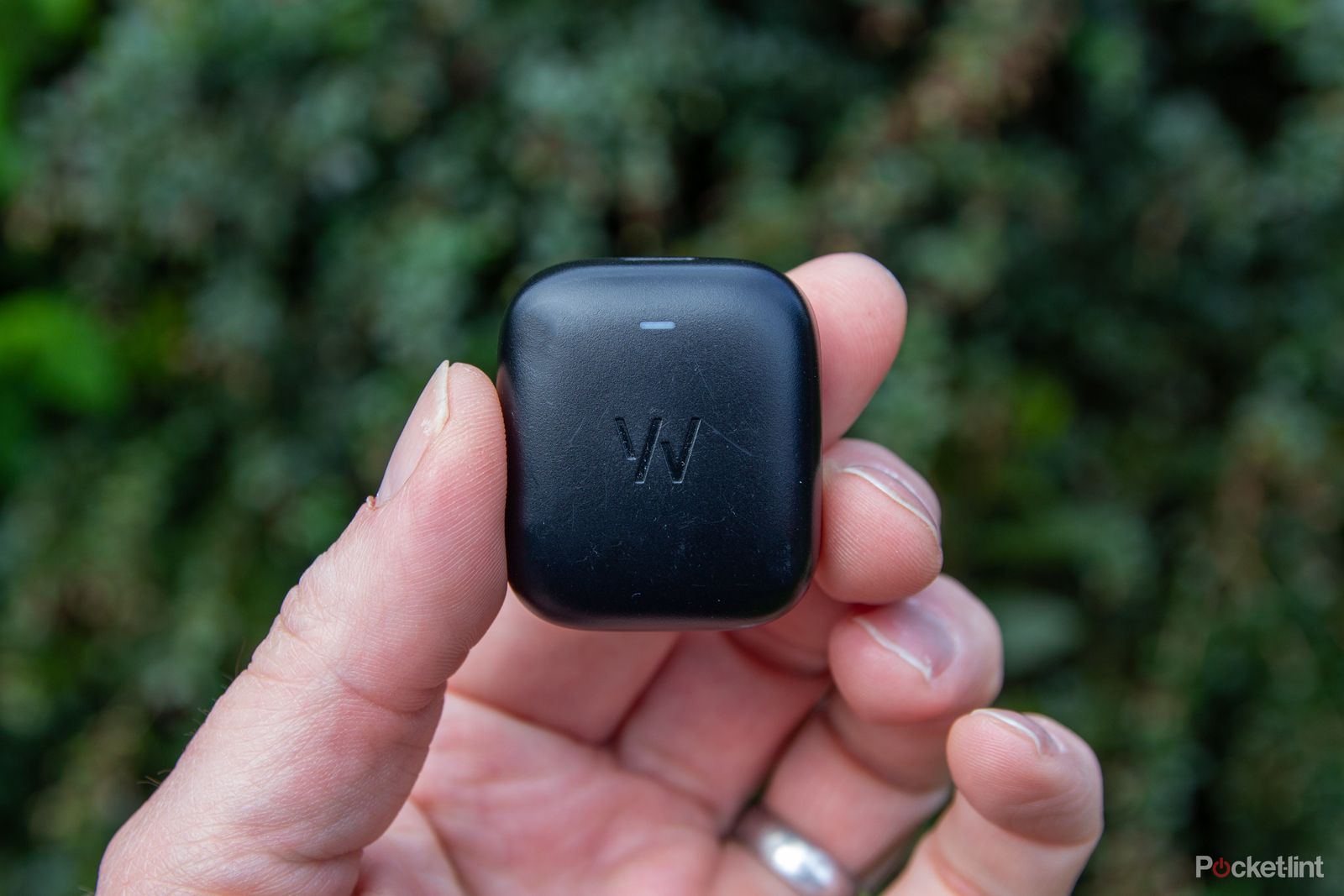We’ve come a long way in the wearables world, from simple bands that track your steps through to fully-fledged smartwatches that will do absolutely everything. Tracking biometrics has long been an option, from the earliest Fitbit Flex through latest Apple Watch. Realising that some devices are just trying to do too much, Whoop offers a solution that, in execution, is more like the former, but in data, more like the latter.
We’ve been wearing the Whoop 4.0 to see what it’s all about.
Whoop pricing and subscriptions
The Whoop band is free when you take out a membership to Whoop – so it’s not really free. The price is $239 (£229) a year, so you could see that as a pretty high cost compared to the one-off price for a Garmin or indeed an Apple Watch. However, the likes of Fitbit gives enhanced sleep data with a subscription to Fitbit Premium for $79.99 (£79.99) a year, so Whoop isn’t alone in looking at a subscription model, but it’s not cheap.
Whoop 4.0
Whoop blends into the background, a lifestyle coach designed to feedback on your rest and recovery, guide you to better sleep habits and to make better choices. It’s not a replacement for a smartwatch or a fitness tracker, but for those wanting something obtrusive the Whoop is an interesting choice.
- Easy to sleep with
- Lots of data in the app
- Compact design
- Battery life isn’t great
- Subscription expensive compared to rival systems
- Not really a fitness tracker
Design
- Interchangable bands
- Limpet battery
Some time ago this reviewer complained about sleep tracking being feature of watches that were, well, impossible to sleep in. You don’t want to be wearing the equivalent of a diver’s watch when you’re trying to head off to the land of nod. Enter Whoop stage right, with what amounts to a strap with a small sensor unit attached to it. In many ways, it’s the same idea as the Oura Ring.
The aim is to reduce the footprint of your tracker, giving you something that you just wear without really thinking about it, a device that’s not designed to be constantly tapped or swiped; there are no buttons, direct interaction is essentially minimal. It is mostly battery, however, powering the sensors that it contains and allowing Bluetooth connectivity to your smartphone.
That connectivity is essential. While Whoop will gather data when not connected, you can’t access any data without it first being synced via your phone to Whoop’s servers for analysis. In some ways, it’s a little like an inert bangle, with a number of different strap styles you can choose to make it more exciting, or to suit your style on that particular day.
You can also remove the strap completely and slip the sensor into compatible Any-Wear garments, so you can use the tracking without having it on your wrist. The Any-Wear range includes sports bras, boxer shorts, swim wear and various bands, so there’s plenty of versatility.
Adjustment of the standard elasticated band is simply a case of tugging the loose end to make it tighter, with a clever clasp mechanism to make it easy to take off. You might never want to take it off, but there’s nothing worse than walking around with a soggy strap after having a shower.
There are no ports on the Whoop, charging happens wirelessly via a battery that slides onto the top of the sensor unit like a limpet. That battery has USB-C for charging, but this arrangement means you can slip on the battery to recharge your Whoop while you’re still wearing it. It’s not compatible with other wireless chargers and that’s a little annoying, because if you misplace that battery or head off on travels without it, you cannot recharge the Whoop and you’d have to buy a replacement ($49 / £44).
What metrics does it capture?
- Optical heart rate sensor
- Blood oxygen
- Motion
There’s a suite of sensors in the Whoop 4.0 centred around the optical heart rate monitor on the rear of the device. This sits against your skin to gather data, much like other fitness trackers or smartwatches. This includes heart rate data, but also includes heart rate variability, blood oxygen levels and motion, from which things like breathing rate can be detected.
The data is used to monitor your activity, with the Whoop 4.0 able to detect and categorise activities automatically, so it will detect a run or a cycle for example, without you having to start and finish that activity via the app. But the mainstay of what Whoop does is monitor what’s happening with your heart in combination with motion data.
Rather than feed you that information as you exercise, Whoop’s raison d’etre is how your body is responding, in particular around rest. From your heart data it can detect when you’re resting and using the measure of heart rate variability, it can determine how well rested you are, and how recovered you are from strain you put yourself under each day.
This not only gives you data about your sleep efficiency, but acts as guidance for the amount of strain you might want to put yourself under the following day. If you’re well rested, it’s a great time to exercise. If you’ve not slept well, it might not be the best time to attempt that personal best you’ve been chasing.
It’s not just biometrics that Whoop uses: it also asks questions with a customisable daily questionnaire. This will include things like tracking how much alcohol you’ve consumed, what your diet is like, what medication you’ve taken as well as allow for things like travel, device viewing and even sexual activity. The aim here is to take into account other factors: it’s well known that alcohol adversely affects your quality of sleep and Whoop can pair up that data and show you just how bad it is.
How does Whoop report its findings?
The app is an essential part of the Whoop experience with data synced into the cloud for processing. You can then see the results in the app, while things like heart rate are always available for you to view, along with stress (which is essentially when heart rate is elevated, but there’s no motion that’s caused it). Some of the other data might take some time to appear, processing taking a little time from when you wake up to when sleep is reported in the app for example.
There are longer delays if you haven’t had your phone nearby – for example if your phone is off for the night while you sleep. The app uses reminders when there’s something to view, from the morning report on your sleep, through to reports on detected activities and weekly or monthly summaries, as well as recommendations, for example to encourage you to head to bed earlier when you’re in sleep deficit.
Whoop isn’t a device that’s focused on the short-term, instead it’s more interested in long-term trends to help you adapt your lifestyle and better learn to work with your body. In many ways, it’s performing the same functions as Garmin’s Body Battery, all based around the idea of promoting recovery as a key aspect of your lifestyle, not just something you do when you’re not racing around.
The data that Whoop offers in the app is extensive, letting you look at your week, month or longer time periods, with the option to share that data with coaches or health professionals. The data is essentially broken down into sleep, recovery and strain, which is pretty much a 180 flip from other fitness trackers that put strain (activity) at the forefront and focus on recovery as a secondary factor.
What’s Whoop like to live with?
As we said, Whoop isn’t a short-term thing, so we’ve been wearing Whoop since late-2022 to get a full picture of what the device offers. We’ve previously expressed problems sleeping in devices and it admittedly took us a couple of weeks to be totally comfortable wearing it to bed. There are people who sleep in Apple Watch without any problems, however, and it will be very much down to the individual whether it’s something that bothers you at night or not.
A couple of times this reviewer has woken up feeling as though the strap is too tight and released it and fallen back to sleep, only to awake later and do it back up again. When the sensors are not in contact with your skin data won’t be captured, so in those instances, you might end up with no data for night. Happily, however, this is a rarity – probably three occasions over 6 months and mostly because of lying on the band while asleep.
We’ve also found it reliable at sleep monitoring – never has it counted lazy times on a sofa as us being asleep, something we’ve seen from other platforms. Sometimes Whoop will report a shorter sleep than you actually had. This might happen if you get up in the middle of the night to go to the toilet, for example. On some occasions, Whoop will then say that’s the sleeping done, even though you then head back and have another 4 hours. In these instances, it’s easy to adjust the end point of the sleep and Whoop will reanalyse the data. What it won’t do, however, is allow you to manually add a sleep and expect that to be factored in. If you don’t wear it to sleep, you don’t get the recovery data and that’s the whole point to wearing Whoop.
During the day, however, Whoop is barely noticeable. It’s not something we’d wear instead of a watch – unless you’re one of those people who has decided only to use their phone for checking the time – so we’ve been happy to wear Whoop on one arm and Garmin on another. It does mean, of course, that if you want to wear a regular watch instead of a smartwatch, you’ll still have all those metrics captured.
Over the time we’ve been using Whoop, it’s become an integral part of daily life, unobstructive enough to slip into the background, but a constant and evolving source of data. Yes, you’ll know when you’ve had a bad night’s sleep. Yes, you probably know when you’re stressed, but Whoop might be the device that guides you to taking a more structured approach to your recovery, it might help you take sleep more seriously as you pair up how you feel with the data from your body.
How well does Whoop track exercise?
As we’ve said a couple of times, Whoop isn’t really a fitness tracker, not in the same way as a Garmin Forerunner for example. You can’t glance at your wrist to check your pace as there’s no display. So if that’s what you’re looking for, then Whoop isn’t the device for you. It can share heart rate data with other systems, so you can use it as a heart rate sensor with your bike computer or treadmill for example, by turning on Bluetooth transmit mode in the app.
For many people, Strava is the holy grail of exercise tracking, and Whoop will sync with Strava too. It will share deliberate activities it detects as part of a daily summary, showing your strain for the day and how that sits based on your recovery. That appears as a workout in Strava, but naturally doesn’t have things like GPS data, as Whoop doesn’t support GPS.
Other activity is automatically detected and categorised, with Whoop able to detect some types of exercise and just identify periods of strain at other times, mostly based around motion and elevated heart rate. Every run and cycle we’ve been on has been detected, but all have the same error in common, which is they often don’t reflect the actual duration of the activity. Whoop will typically see a few minutes before and after the activity as part of it, even when heart rates are at normal levels. This might see a 35-minute run reported as 40 minutes, for example.
There’s also been some detection of activities that haven’t occurred and these highlight some periods where heart rate detection isn’t accurate. The most frequent cause of this is the strap not being worn tight enough, so the sensor doesn’t then quite detect accurately. This is something you’ll adapt to when wearing the Whoop for longer periods of time, but if we loosened it over night for example without tightening it the following day, that’s often when we’d get a report of something extreme, like 4 hours of activity at 90 per cent heart rate threshold, which clearly hadn’t happened.
As a runner, Whoop isn’t hugely useful because of the lack of data visibility – there’s no speed, pace, distance, or anything else, but as a cyclist using a bike computer to capture most data, Whoop can usefully add heart rate into the mix, transmitting that to any device that will accept an external Bluetooth heart rate sensor. However, what Whoop wants you to do is lead an active life, wearing the band and to mix up your exercise to strain your body to make fitness gains. It’s much more about supporting that active lifestyle than it is training for a specific sport.
How long does Whoop’s battery last and what’s the connectivity like?
The battery of the Whoop 4 will last about 3 days in our experience and that’s perhaps the biggest downside of the device. Recharging is clever with that limpet-style battery that slides on, but that also only offers a couple of charges. That leaves you with the sense that Whoop needs charging on a regular basis and the lack of support for other charging standards like Qi is an irritation. There’s also no way to reliably see how much charge is in the external battery, so you might be carrying around a flat battery.
Connectivity is generally good once connected to a device, but having moved smartphones several times during the review of Whoop, we’ve found that pairing with a new phone can sometimes be a bit hit and miss. That’s left us often carrying the old phone with us to sync Whoop, rather than battle to get it connected to a new device. There just seems to be a lack of information about why it won’t connect.
It can also be irritating to wake up and find that data isn’t synced and there’s no real way to force the sync. You can refresh the app, but sometimes it just decides it’s not syncing and you’ll have to leave it until it decides it’s ready to go.
We’ve only had one or two occasions (out of about 180 nights) when no data was captured despite the Whoop being worn. As irritating as that one occasion is, every other night of missed data has been through us releasing the strap during the night. So that’s not a bad track record for Whoop’s performance overall.
What else does Whoop do?
Whoop is an evolving experience. During the time we’ve been reviewing Whoop 4.0, we’ve seen it add stress levels, which can give you another insight into your day. There’s also a whole coaching side to Whoop, trying to guide you to get the correct amount of sleep. There’s also the option to select whether you want to simply get by, or whether you want to perform. You can then set alarms designed to wake you up when you’ve had the required amount of sleep. Whoop isn’t the first to have sleep-defined alarms, but again, it’s an additional feature to give Whoop users a little more.
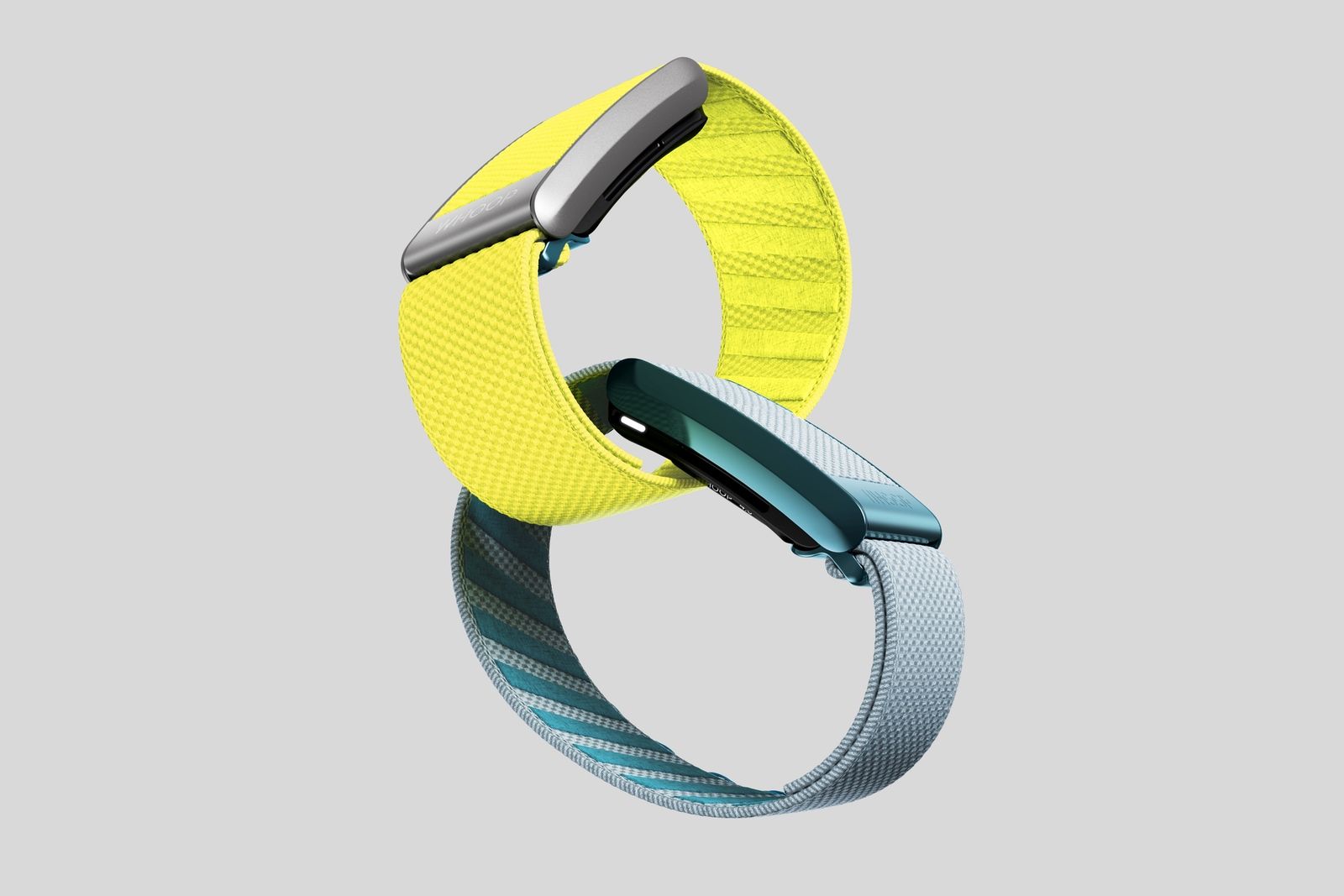
Verdict
Whoop 4.0 is an interesting device and for those who want more information on their sleep and recovery, it comes recommended. Certainly, there’s a level of detail in the data captured that’s comparable or more expansive than other popular options like Fitbit, Garmin or Apple Watch. What we like is that it shows you your heart rate through sleep, not just the zones. Having a device that’s physically more compact and easier to sleep in is an inherent advantage – as long as recovery is your primary interest, rather than sport training, in which case you’d be better off with something else.
Whoop blends into the background, a lifestyle coach designed to feedback on your rest and recovery, guide you to better sleep habits and to make better choices. It’s not a replacement for a smartwatch or a fitness tracker, but for those wanting something obtrusive, the Whoop is an interesting choice.
Trending Products

Cooler Master MasterBox Q300L Micro-ATX Tower with Magnetic Design Dust Filter, Transparent Acrylic Side Panel…

ASUS TUF Gaming GT301 ZAKU II Edition ATX mid-Tower Compact case with Tempered Glass Side Panel, Honeycomb Front Panel…

ASUS TUF Gaming GT501 Mid-Tower Computer Case for up to EATX Motherboards with USB 3.0 Front Panel Cases GT501/GRY/WITH…

be quiet! Pure Base 500DX Black, Mid Tower ATX case, ARGB, 3 pre-installed Pure Wings 2, BGW37, tempered glass window

ASUS ROG Strix Helios GX601 White Edition RGB Mid-Tower Computer Case for ATX/EATX Motherboards with tempered glass…


